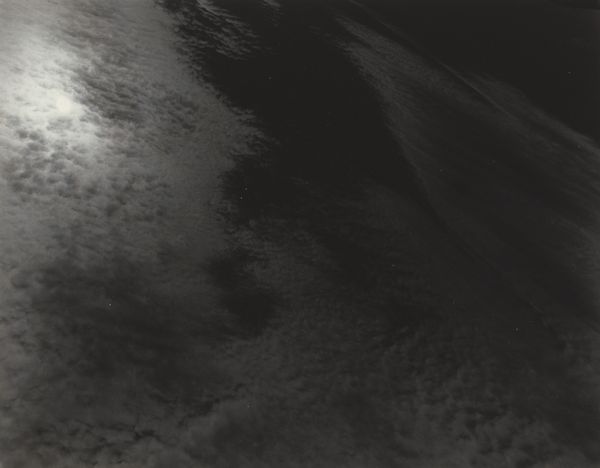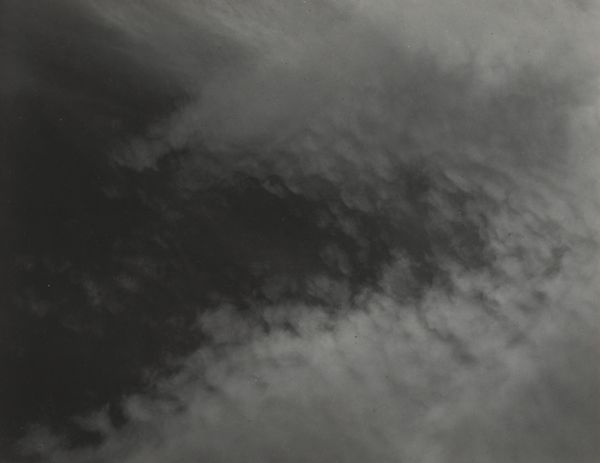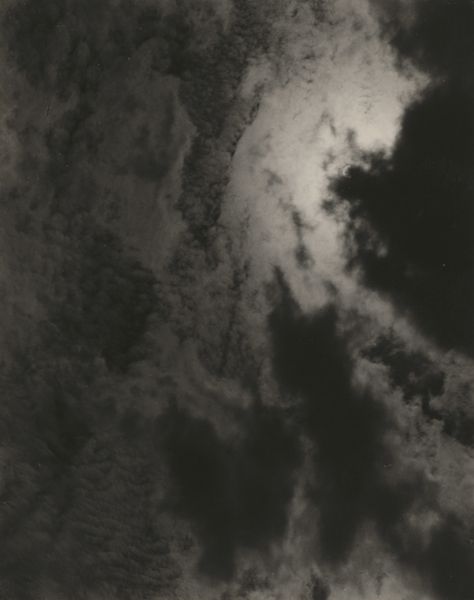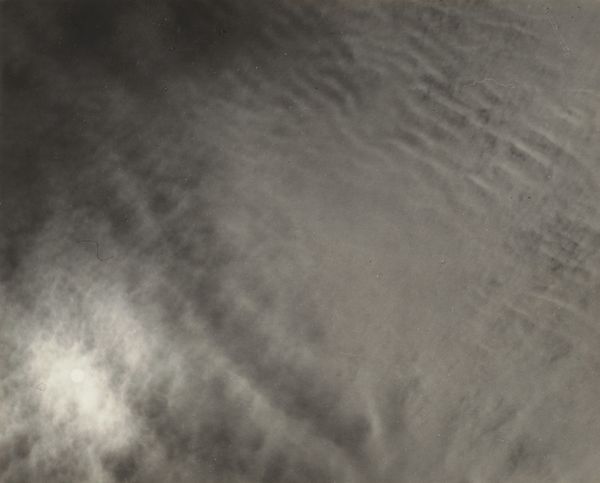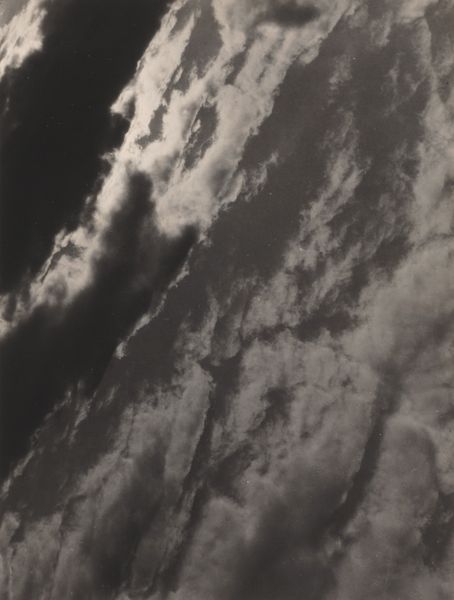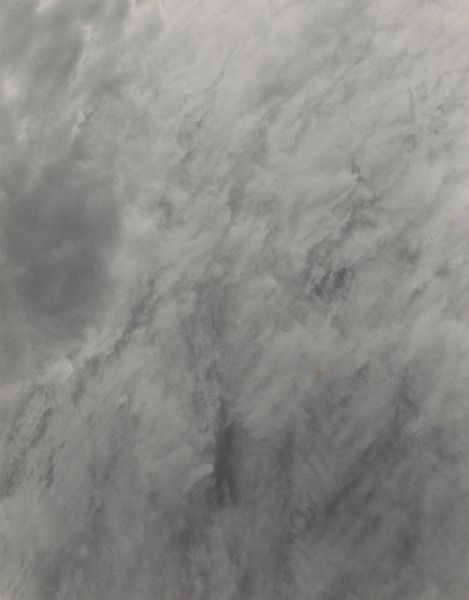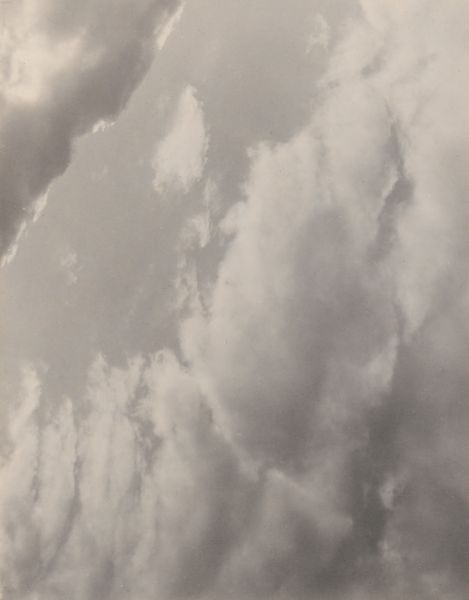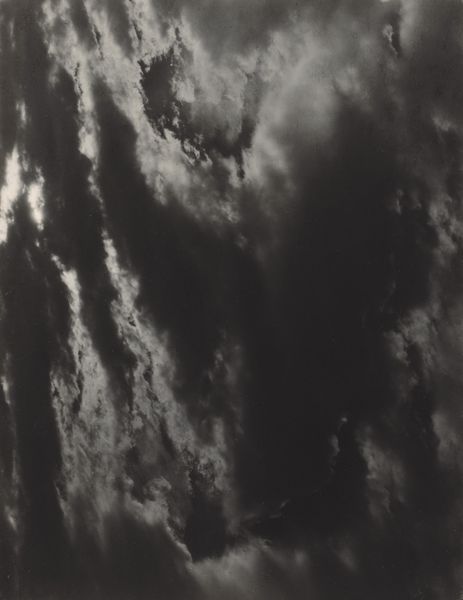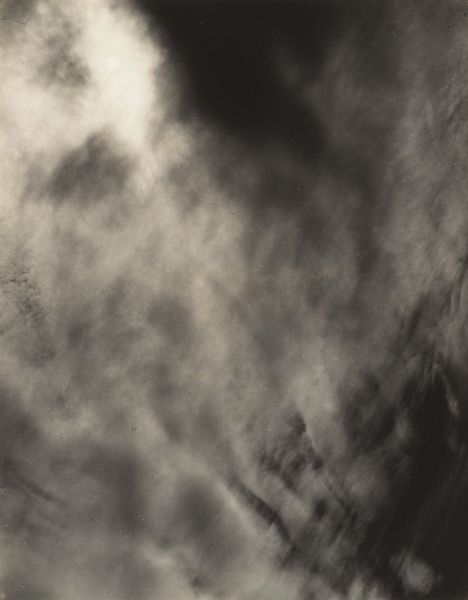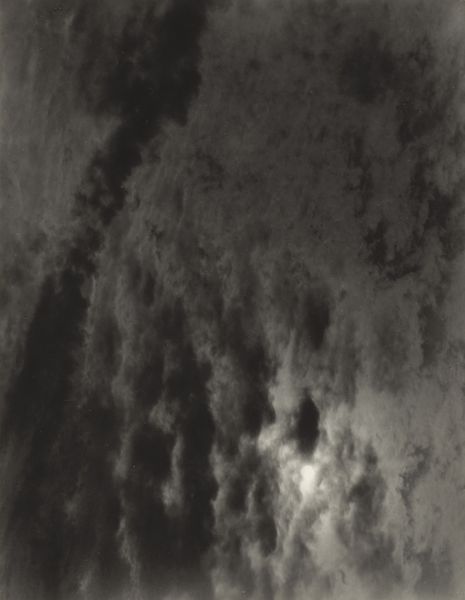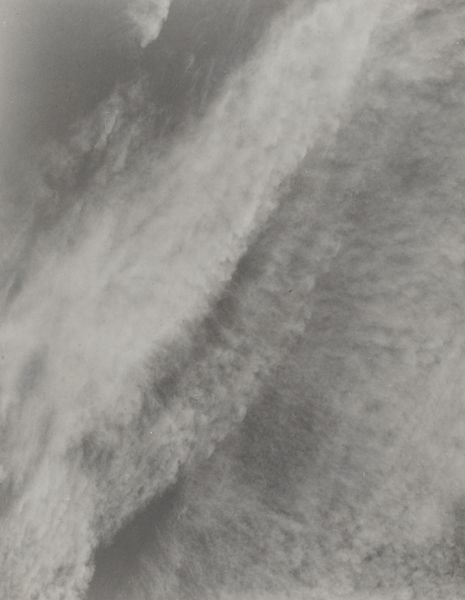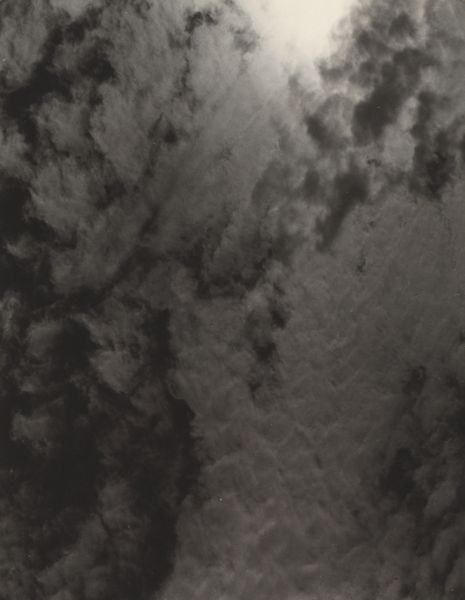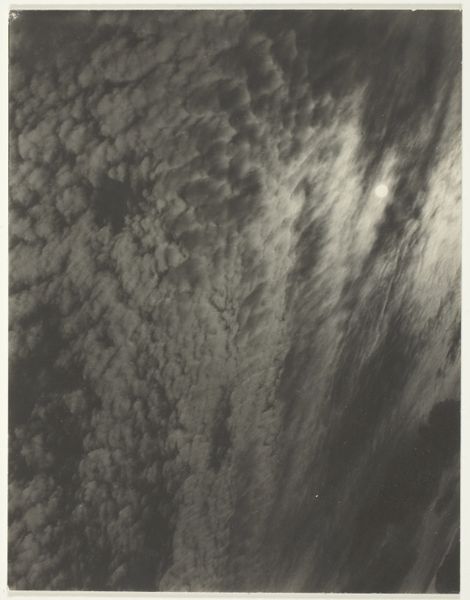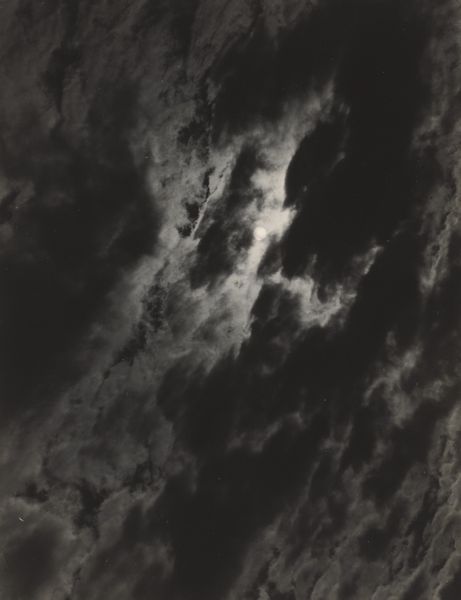
Dimensions: 9.1 × 11.6 cm (image/paper/first mount); 34.4 × 27.6 cm (second mount)
Copyright: Public Domain
Editor: So, this is Alfred Stieglitz's "Equivalent, from Set E (Print 1)," taken in 1923. It's a photograph, a silver print on paper. The immediate impression is ethereal, almost haunting. It feels less like a picture of something and more like a… a feeling made visible. What do you see in this piece? Curator: It's a brilliant capture of… well, everything! Stieglitz wasn't just photographing clouds; he was using them as metaphors. He called them "Equivalents" because he felt they could express his deepest emotions, his philosophies. Tell me, does the interplay of light and shadow suggest anything to you? Any particular… state of mind, perhaps? Editor: I guess the stark contrast evokes a sense of drama, maybe even a little anxiety? The light parts are so soft, while the darker areas feel… looming. Curator: Exactly! And that's where the genius lies. Stieglitz wanted to move beyond literal representation. These clouds aren’t just weather; they're symbols. Think of it: nature reflecting inner turmoil, hope battling despair... a dance of opposites played out in the sky. Does knowing this change how you view the photograph? Editor: It does. Knowing they're "equivalents" gives it such a broader scope, and the symbolism makes so much sense. So much more than just fluffy clouds! Curator: He wanted to invite everyone to project their inner self into what he photographed, for photography to not just reflect life but the abstract inner life. I guess, for me, they represent constant movement and inevitable change... Editor: I didn't expect that level of depth. It’s pretty amazing how he turned something as simple as clouds into something so emotionally charged and universal. Thanks for opening my eyes to the emotional impact of Stieglitz’s work.
Comments
No comments
Be the first to comment and join the conversation on the ultimate creative platform.
